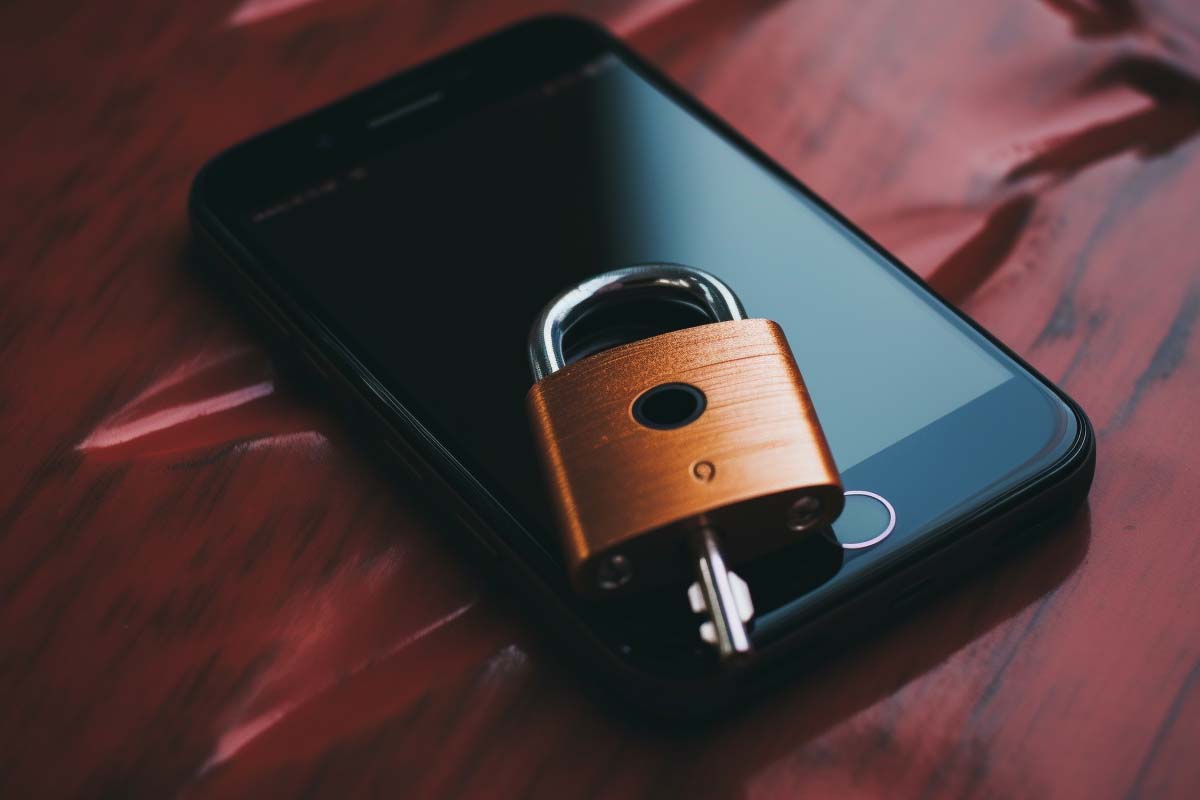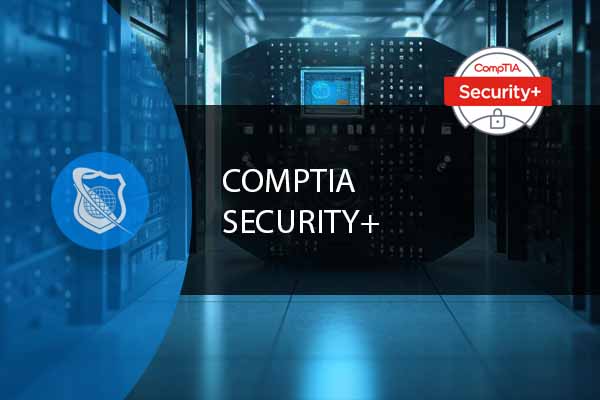Securing mobile devices is a critical step to ensure your organization avoids security threats. Mobile devices are indispensable tools for productivity and connectivity. However, their ubiquity and versatility also make them prime targets for security threats. As organizations increasingly adopt flexible work arrangements, the challenge of securing a diverse array of mobile devices has never been more critical. This guide delves into the strategies and technologies essential for protecting mobile devices within the workplace, ensuring both organizational security and user satisfaction.

IT User Support Specialist Career Path
View our comprehensive training series covering all the key elements and certifications needed to successfully excel in an IT User Support Specialist job role.
Deployment Strategies for Mobile Devices
Bring Your Own Device (BYOD): BYOD policies allow employees to use their personal devices for work-related activities, enhancing user satisfaction and convenience. However, this approach requires IT departments to support a wider range of device types, complicating standardization and security efforts.
Corporate Owned, Personally Enabled (COPE): Under COPE, organizations provide employees with company-issued devices, facilitating easier management and standardization for IT departments. Although this method simplifies security, it may not be well-received by employees who prefer using their personal devices.
Choose Your Own Device (CYOD): CYOD strikes a balance between BYOD and COPE by offering employees a selection of approved devices. This model provides flexibility while maintaining a manageable scope for IT support and security.
Mobile Device Connectivity
- Cellular Networks: The primary method for mobile connectivity, enabling broad coverage but incurring costs based on carrier plans.
- Wi-Fi: Offers an alternative to cellular data, avoiding usage charges and providing connectivity in local areas. Wi-Fi connections are identified by MAC and IP addresses, rather than phone numbers.
- Bluetooth and NFC: Support short-range connections for devices and IoT wearables, with Bluetooth covering several feet and NFC limited to a few inches. These technologies facilitate file transfers and contactless payments, though they often present security challenges.
Securing Mobile Devices
Two-Factor Authentication: Enhances security by requiring a second form of verification beyond just a password or PIN.
App Permissions and Partitioning: Allows control over app access to device features and separates work data from personal data, crucial for BYOD scenarios.
Encryption: Full disk encryption protects data stored on the device, while secure enclaves offer additional protection for biometric and cryptographic data.
Remote Management: Features such as device tracking, remote lock/wipe, and automated updates help manage and secure devices outside the office.
Mobile Device Management (MDM): MDM solutions enable centralized management of mobile devices, offering features like over-the-air app installation, device tracking, and enforcing security policies.

Information Security Manager Career Path
Propel your career forward and be part of an essential member of any management team as an Information Security Manager. This advanced training series is designed specifically for those want to move up into a management position in the IT field.
Implementing MDM for BYOD
Implementing Mobile Device Management (MDM) for Bring Your Own Device (BYOD) programs is a strategic approach that allows organizations to secure and manage personal devices used for work purposes. This process involves several steps and considerations to ensure that both company data is protected and employee privacy is respected. Here’s a detailed look at how organizations can successfully implement MDM for BYOD:
1. Choosing the Right MDM Solution
The first step is selecting an MDM platform that fits the organization’s needs, considering factors like compatibility with various operating systems, scalability, ease of use, and the specific security features it offers. Popular MDM solutions include Microsoft Intune, Cisco Meraki, and Jamf, among others. The chosen MDM should support seamless integration with the company’s existing IT infrastructure and provide a comprehensive set of tools for managing and securing mobile devices.
2. Defining BYOD Policies
Clear BYOD policies are crucial for setting expectations and responsibilities for both the organization and its employees. These policies should cover aspects such as which types of devices are allowed, acceptable use, security requirements (e.g., encryption, antivirus protection), and what happens in the event of a device being lost or leaving the company. It’s essential that these policies are communicated effectively to all employees participating in the BYOD program.
3. Enrolling Devices and Installing MDM Agents
Once the MDM solution is in place and policies are defined, the next step is enrolling employees’ devices in the MDM program. This typically involves installing an MDM agent on each device, which can often be done by sending employees an email link or guiding them through a self-enrollment process. This agent allows the IT department to manage devices remotely, applying security policies and performing actions like software updates, app installations, or remote wipes if necessary.
4. Implementing Security Measures
With MDM, organizations can implement various security measures to protect company data on personal devices. These include:
- Encryption: Ensuring all data stored on the device is encrypted.
- Password Policies: Enforcing strong password policies and screen lock requirements.
- App Management: Controlling which apps can be installed and accessing company data.
- Remote Wipe: The ability to remotely erase company data from a device if it is lost or stolen, without affecting personal data.
5. Maintaining Privacy and Transparency
A significant concern for employees in BYOD programs is the protection of their personal privacy. Organizations must ensure that MDM policies and actions are transparent, focusing on securing company data without intruding on personal data or usage. Features like containerization, which separates and encrypts company data on the device, can help address these concerns by preventing IT from accessing personal information.
6. Ongoing Management and Support
Implementing MDM for BYOD is not a one-time task but an ongoing process. Organizations need to regularly review and update their BYOD and MDM policies to adapt to new threats, technological advances, and changes in the workplace. Providing ongoing support and training for employees is also crucial to ensure they understand how to use their devices securely and are aware of any changes in policies or procedures.
7. Compliance and Legal Considerations
Finally, organizations must consider legal and compliance issues related to BYOD and MDM. This includes understanding data protection regulations, such as GDPR in Europe or CCPA in California, and ensuring that MDM practices comply with these laws. It’s also important to have clear agreements in place with employees regarding the use of personal devices for work, outlining the rights and responsibilities of both parties.
Implementing MDM for BYOD effectively combines technical solutions with clear policies and communication to create a secure and productive mobile work environment. By carefully considering the steps outlined above, organizations can protect sensitive company data while respecting employee privacy and fostering a flexible work culture.
Secure Your Networks and Prevent Password Breaches
Our robust CompTIA Sec+ course is the perfect resouce to ensure your company’s most valuable assets are safe. Up your security skills with this comprehensive course at an exceptional price.
Addressing Employee Concerns with MDM and BYOD
To protect company data while respecting employee privacy, organizations can use MDM to partition devices, separating company data from personal information. Implementing full disk encryption and setting conditions for device locking and wiping can further enhance security without infringing on personal data.
Addressing employee concerns in a BYOD (Bring Your Own Device) environment, while implementing Mobile Device Management (MDM) solutions, requires a delicate balance. Employees are often apprehensive about the potential for privacy invasion and the loss of personal data control. Organizations must therefore implement MDM policies that respect personal privacy while ensuring the security of corporate data. Here’s how companies can address these challenges effectively:
Transparent Communication
Open Dialogue: Engage employees in discussions about the necessity and benefits of MDM policies. Transparency about what data the company can access (and what it cannot) helps alleviate privacy concerns.
Policy Clarity: Provide clear, written explanations of MDM policies, including what happens in the event of a device being lost or leaving the company. Understanding these policies can reassure employees about the protection of their personal information.
Privacy-Preserving Practices
Partitioning: Use MDM to create a clear separation between corporate and personal data on devices. This ensures that company oversight is limited to work-related information and applications, not personal content.
Minimal Data Access: Design MDM policies to limit the organization’s access to only what is necessary for security and compliance. For instance, while device location might be tracked for lost devices, detailed browsing history or personal messages remain private.
Security Measures with Personal Considerations
Selective Wiping: Implement capabilities for selectively wiping corporate data from personal devices without affecting personal content. This is crucial for addressing concerns about personal data loss due to remote actions taken by the company.
Encryption: Encourage or mandate encryption of both company and personal data. This not only secures sensitive corporate information but also protects personal data from unauthorized access.
Consent-Based Policies: Where possible, involve employees in the decision-making process regarding which apps and security measures are installed on their devices. Offering choices can help maintain autonomy and satisfaction.
Employee-Controlled Security
User-Friendly Security Tools: Provide employees with easy-to-use tools for enhancing their device security. This can include VPNs, antivirus software, and secure browsing tools that they can choose to install.
Education and Training: Offer regular training sessions on security best practices, such as recognizing phishing attempts and securing personal data. Educated employees are more likely to appreciate the value of MDM policies.
Regular Review and Feedback
Feedback Mechanism: Establish a system for employees to provide feedback on the MDM policy and its implementation. This can help identify issues and areas for improvement.
Policy Reevaluation: Regularly review and update MDM policies to reflect new technological advancements, changes in privacy laws, and employee feedback. This ensures that policies remain relevant and respectful of personal privacy.
By addressing employee concerns with thoughtful, privacy-preserving MDM practices, organizations can create a secure and trusting environment. This approach not only safeguards corporate data but also respects and protects the personal information and autonomy of employees, fostering a positive and productive BYOD culture.
Conclusion
In the evolving landscape of mobile device usage in the workplace, organizations must navigate the balance between flexibility and security. By carefully choosing a deployment strategy and leveraging technologies like MDM, companies can protect their data while accommodating the diverse needs of their workforce. Implementing robust security measures, from encryption to remote management, ensures that both company and personal data remain secure in the face of evolving threats.
Key Term Knowledge Base: Key Terms Related to Securing Mobile Devices in the Workplace
Understanding the key terms related to securing mobile devices in the workplace is crucial for IT professionals, security experts, and employees. As mobile devices like smartphones and tablets become integral to business operations, their security becomes a paramount concern. These devices hold sensitive information and access to corporate networks, making them attractive targets for cyber threats. Knowledge of the terminology in this field is essential for implementing effective security strategies, ensuring compliance with regulations, and protecting against data breaches and other security incidents.
| Term | Definition |
|---|---|
| Mobile Device Management (MDM) | A type of security software used by an IT department to monitor, manage, and secure employees’ mobile devices that are deployed across multiple mobile service providers and operating systems. MDM allows for the distribution of applications, data, and configuration settings and helps in securing corporate data on mobile devices. |
| Bring Your Own Device (BYOD) | A policy that allows employees to bring personally owned mobile devices (laptops, tablets, and smartphones) to their workplace, and to use those devices to access privileged company information and applications. BYOD policies can improve employee satisfaction but introduce security risks that need to be managed. |
| Mobile Application Management (MAM) | Refers to the workflow for security, governance, and distribution of mobile apps in the workplace. MAM policies can control access to corporate apps, and data, without controlling the entire device, offering a balance between usability and security. |
| Enterprise Mobility Management (EMM) | A set of services and technologies designed to secure corporate data on employees’ mobile devices. EMM goes beyond MDM and MAM by providing a holistic approach that includes application management, information management, and device management strategies. |
| Mobile Content Management (MCM) | A set of technologies that protects sensitive corporate content accessed and stored on mobile devices, ensuring that only authorized users can access the content and that it is stored in a secure manner. MCM solutions often include features for content encryption, secure file sharing, and data loss prevention (DLP). |
| Data Loss Prevention (DLP) | A strategy for making sure that end users do not send sensitive or critical information outside the corporate network. DLP software products help a network administrator control what data end users can transfer. |
| Encryption | The process of converting information or data into a code, especially to prevent unauthorized access. Encryption can be applied to data at rest (stored data) and data in transit (data being transmitted). |
| Authentication | The process of verifying the identity of a user or device, typically through credentials such as passwords, biometric data, or security tokens. |
| Authorization | The process of giving someone the right to use a system, application, or resource. While authentication confirms identity, authorization determines what actions the authenticated user or device is allowed to perform. |
| VPN (Virtual Private Network) | A technology that creates a safe and encrypted connection over a less secure network, such as the internet. VPNs are used to secure data transmissions and to mask the identities of users by hiding their IP addresses. |
| Two-Factor Authentication (2FA) | An additional layer of security that requires not only a password and username but also something that only the user has on them, i.e., a piece of information only they should know or have immediately to hand – such as a physical token. |
| Biometric Authentication | A security process that relies on the unique biological characteristics of an individual to verify that they are who they say they are. This can include fingerprint, facial recognition, and iris scanning. |
| Patch Management | The process of distributing and applying updates to software. These patches are often necessary to correct vulnerabilities and bugs that could be exploited by hackers. |
| Jailbreaking/Rooting | The process of removing software restrictions imposed by the operating system on devices like iPhones (jailbreaking) and Android phones (rooting). While it allows users more control over their devices, it can also expose them to increased security risks. |
| Phishing | A cybercrime in which a target or targets are contacted by email, telephone, or text message by someone posing as a legitimate institution to lure individuals into providing sensitive data such as personally identifiable information, banking and credit card details, and passwords. |
| Malware | Any software intentionally designed to cause damage to a computer, server, client, or computer network. Malware includes viruses, worms, Trojan horses, ransomware, spyware, adware, and other malicious programs. |
| Ransomware | A type of malicious software designed to block access to a computer system or data until a sum of money is paid. Ransomware attacks can lead to significant data loss and downtime for businesses. |
| Secure Wi-Fi | Wireless networks that are protected by security protocols to prevent unauthorized access or damage to computers using the network. The most common secure Wi-Fi protocols include WPA2 and WPA3. |
| Zero Trust Security | A security model based on the principle of maintaining strict access controls and not trusting anyone by default, even those already inside the network perimeter. This approach requires verifying the identity of every user and device trying to access resources on a private network, regardless of whether they are within or outside of the network perimeter. |
| Containerization | A lightweight alternative to full machine virtualization that involves encapsulating an application in a container with its own operating environment. This approach can help secure mobile applications by isolating them from the rest of the device. |
| Endpoint Protection | Security measures that are specifically designed to protect the endpoints of a network, often defined as end-user devices such as mobile devices, from threats. Endpoint protection solutions can include antivirus software, firewalls, and other malware protection tools. |
Frequently Asked Questions Related to Securing Mobile Devices
What is Mobile Device Management (MDM) and why is it important for BYOD?
MDM refers to software solutions that allow organizations to manage, monitor, and secure mobile devices used by employees within the company network. For BYOD (Bring Your Own Device) programs, MDM is crucial as it helps protect sensitive company data on personal devices, ensuring that security policies are consistently applied across all devices accessing corporate resources.
How does MDM address employee privacy concerns in a BYOD program?
MDM solutions can be configured to respect employee privacy by focusing only on managing and securing company data, without accessing personal information. Features such as containerization segregate personal and company data, ensuring that IT departments can enforce security policies on the corporate data without intruding on the employee’s personal space.
Can employees choose not to participate in the BYOD program and still access company data?
Participation in BYOD programs is typically voluntary, but access to company data may require adherence to certain security measures facilitated by MDM. Employees who choose not to participate in BYOD might be provided with alternative methods to access company data, such as through corporate-owned devices or limited access via secure web applications.
What happens if an employee’s device is lost or stolen?
MDM enables IT administrators to remotely lock and wipe company data from lost or stolen devices, minimizing the risk of data breaches. Policies should be in place to promptly report such incidents, allowing for immediate protective actions without affecting the personal data stored on the device.
How do companies ensure that MDM policies comply with data protection regulations?
Organizations must carefully design their MDM policies to comply with relevant data protection laws, such as GDPR or CCPA. This includes obtaining explicit consent from employees for the management of their devices, ensuring data is processed only for specified, legitimate purposes, and maintaining transparency about what data is collected and how it is used. Regular audits and legal consultations can help ensure ongoing compliance.

























